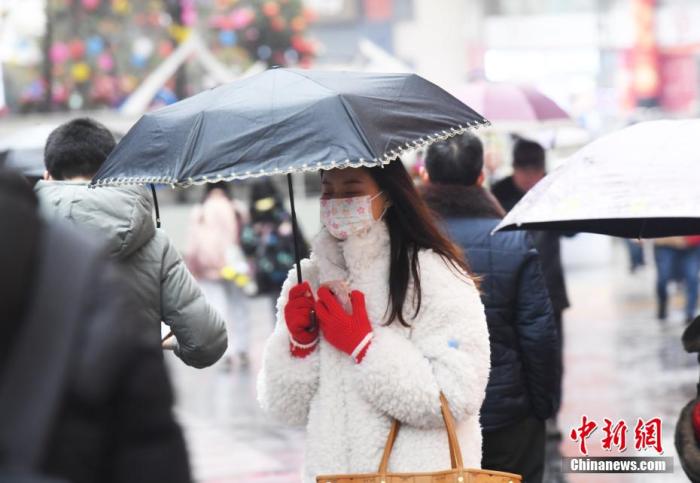China News Agency, Beijing, March 25 (Reporter Chen Su) The reporter learned from the China Meteorological Administration on the 25th that recently, a strong cold air has affected the central and eastern regions of China, bringing cooling and precipitation. There will be significant precipitation in the southeast.
Data map: The picture shows a citizen wearing woolen gloves to keep out the cold.
Photo by Chen Chao
From the 24th, a new round of cold air began to affect the central and eastern regions of China. Northeast China, North China and South China were successively affected by a wide range of rain and snow weather.
According to live monitoring, on the 24th, heavy rain or heavy rain occurred in parts of southeastern Henan, Anhui, western Jiangsu, northern and southern Jiangxi, eastern Hubei, eastern Hunan, southwestern Fujian, central and northern Guangdong, and northeastern Guangxi. and other local heavy rains (100-162 mm); snow, rain or sleet 2-14 mm in northwestern Xinjiang, western and central Gansu, southeastern Qinghai, northern Sichuan plateau, northeastern Inner Mongolia, and parts of central and western Heilongjiang.
On the morning of the 25th, heavy fog occurred in parts of Beijing, Tianjin, central Hebei, southeastern Shanxi, southwestern Hubei, southern Chongqing, northeastern Guizhou, southern Guangxi, and southeastern Guangdong, and local visibility was less than 200 meters. Fog; sand and dust weather in the southern Xinjiang Basin.
According to the forecast of the Meteorological Department, from the 25th to the 27th, the influence of the cold air will continue, and the temperature in the central and eastern regions will drop by 4 to 6 °C, with a local drop of more than 10 °C.
Parts of the north will have winds of magnitude 4 to 6 and gusts of magnitude 7 to 9.
For example, the highest temperature in eastern Northwest China, southern North China, Huanghuai and other places on the 24th was still around 20°C. On the 25th, with the arrival of the main body of cold air, the highest temperature in the above-mentioned areas will generally drop to less than 15°C.
From the east of the southwest region to the south of the Yangtze River, the temperature will continue to rise on the 25th. The highest temperature in most areas may exceed 20°C, but after the cold air moves south on the 26th, the temperature will also decline. The highest temperature in Hangzhou is expected to be 21°C on the 25th. It will drop to around 17°C on the 26th.
In terms of precipitation, it is expected that from the 25th to the 26th, there will be light to moderate snow or sleet and local heavy snow in parts of Gansu, Qinghai, northeastern Tibet, western Sichuan Plateau, northeastern Inner Mongolia, Heilongjiang and other places; There are moderate to heavy rains in the eastern part, the eastern part of Huanghuai and the southeastern part of the Northeast region, and there are heavy rains or heavy rains in Jiangxi, Fujian, Zhejiang, Guangdong and other places.
The Central Meteorological Observatory continued to issue a blue rainstorm warning at 6:00 on the 25th.
Meteorological experts reminded that at the time of the alternation of winter and spring, the temperature difference between day and night in many areas is large.
(over)

